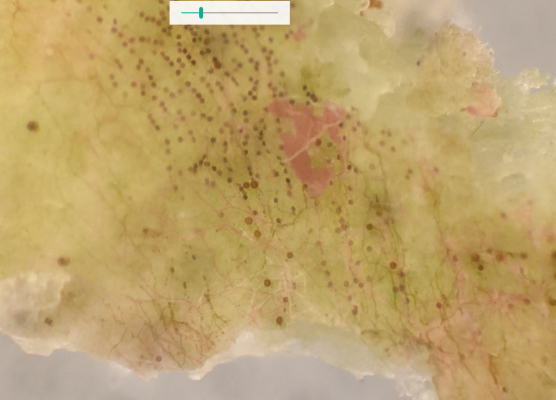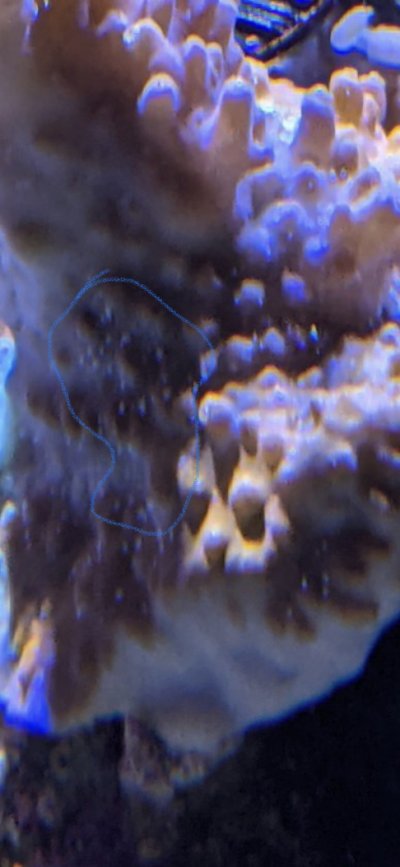I've also posted this in general as I'm trying to find a solution but not getting any leads. I'm looking for any insights that you can provide:
I really need some help here. I'm watching many of my acros die a little more every day.
I tested parameters again today:
Ammonia: 0, Nitrite: 0, Nitrate: 0 I have some algae so I'm not super surprised that they're all at 0, but it the levels of algae are very minimal.
pH: 7.8, temp: 78F, Salinity: 1.026
Using Hanna checkers:
Alk 7.4, Calcium: 468ppm, phos: 0.16
The phos is WAY too high and would explain why I clean my glass every other day, however, I'm not familiar with high phos killing acros specifically.
I should be clear - the acros are dying from the edge, and only some of them. I broke off two pieces and have attached images from the dissection scope.
Unfortunately I don't have access to a better scope right now. I've attached a file of what appear to be eggs. I'm not seeing the traditional redbugs, but I am seeing A LOT of translucent globular shaped things that move VERY fast across the surface of the acro. They do appear to be flat, but I don't know if I've ever seen flatworms move this fast. They are so small that Even zoomed in the most I could on the scope, then 2x with the phone, and digitially zoomed I cannot show them, but that is partly because of them being transparent.
I know that this isn't a lot to go off of. At this point I'm thinking I should treat for redbugs and flatworms simultaneously. I think the browning out is perhaps a function of high phosphates. I'll be checking my RODI water tomorrow before to make sure its not unusually high in phos.
Again, any thoughts are HIGHLY appreciated.

I really need some help here. I'm watching many of my acros die a little more every day.
I tested parameters again today:
Ammonia: 0, Nitrite: 0, Nitrate: 0 I have some algae so I'm not super surprised that they're all at 0, but it the levels of algae are very minimal.
pH: 7.8, temp: 78F, Salinity: 1.026
Using Hanna checkers:
Alk 7.4, Calcium: 468ppm, phos: 0.16
The phos is WAY too high and would explain why I clean my glass every other day, however, I'm not familiar with high phos killing acros specifically.
I should be clear - the acros are dying from the edge, and only some of them. I broke off two pieces and have attached images from the dissection scope.
Unfortunately I don't have access to a better scope right now. I've attached a file of what appear to be eggs. I'm not seeing the traditional redbugs, but I am seeing A LOT of translucent globular shaped things that move VERY fast across the surface of the acro. They do appear to be flat, but I don't know if I've ever seen flatworms move this fast. They are so small that Even zoomed in the most I could on the scope, then 2x with the phone, and digitially zoomed I cannot show them, but that is partly because of them being transparent.
I know that this isn't a lot to go off of. At this point I'm thinking I should treat for redbugs and flatworms simultaneously. I think the browning out is perhaps a function of high phosphates. I'll be checking my RODI water tomorrow before to make sure its not unusually high in phos.
Again, any thoughts are HIGHLY appreciated.


















